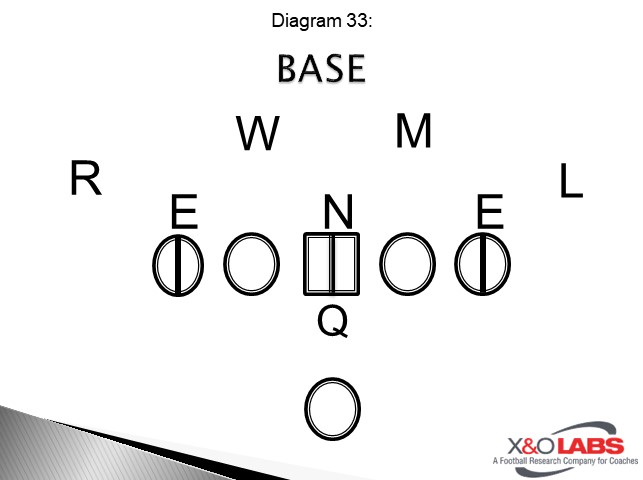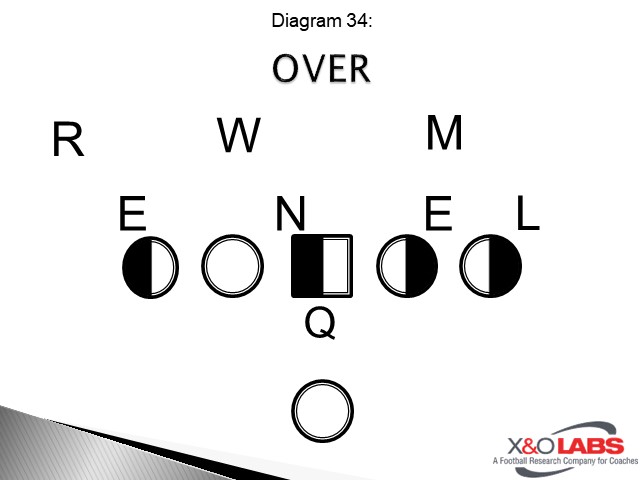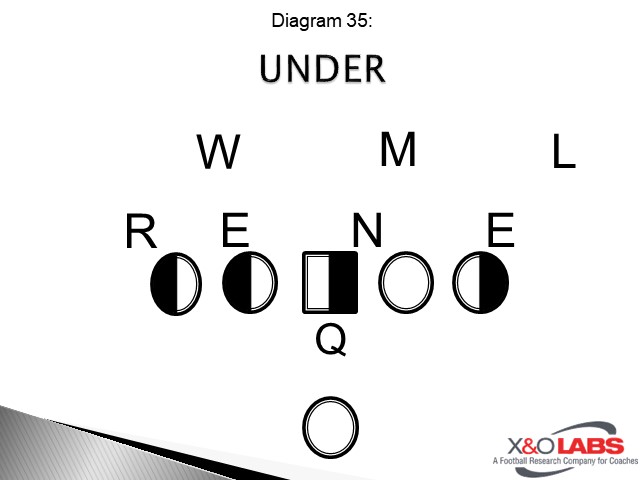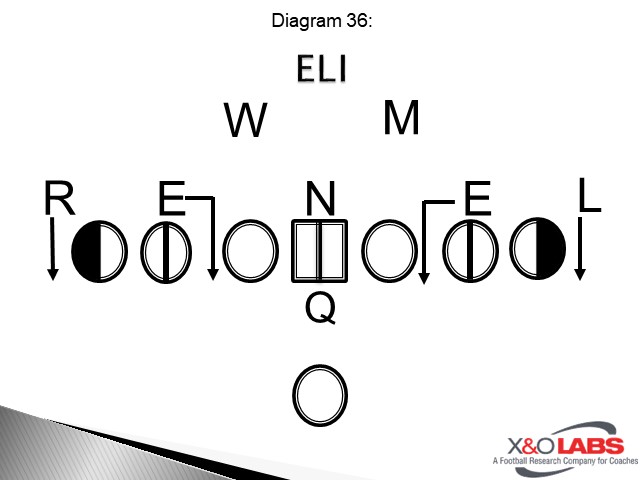By Jason Martinez
Defensive Coordinator
Grinnell College (IA)
Editor's Note: The following research was written in the first person by Jason Martinez, the defensive coordinator at Grinnell College (IA)
When faced with 12/21 personnel sets we first try to determine the different formations and run game tendencies that we will see, so we can game plan how we want to attack the two and three-man surfaces out of these personnel groups. It is nothing earth shattering really, we just find ways to affect the run game while remaining gap sound. For example, we like to utilize stunts that attack the interior gaps vs an interior run game like inside zone, cutback, trap, etc. And utilizing stunts that attack outside gaps vs an outside run game like speed option, toss and outside zone. As well as finding ways to stunt in the B-gap to attack off-tackle run game like power and counter.
Defensive Buzz Words
Spark Step: This is a flat inside step performed down the line, 2nd step is a gather coming to balance to explode thru the hips.
All of these movements will be utilized out of the following three fronts. Our defensive line understands that an individual stunt call always overrides the front alignment:
Base:

Over:

Under:

The following below are just a few of the basic stunts and gap surge techniques that our OLBs and DEs will utilize in our base defense vs 11/12/21 personnel sets.
Eli Stunt—B/C Gap or B/D Gap stunt depending on 2-man or 3-Man surface:
Best Practice
We like utilizing these calls vs interior run game-Zone, Trap, Dive as well as Off Tackle, Power and Counter.

- DEs: are responsible for the B-gap in the run game.
- We teach them to rip across the face of the OT into the B-gap utilizing a spark step inside to the B-gap getting vertical. His eyes and hands are to go to the outside shoulder (V of the Neck) of the OG. If he is to him, he will engage and drive the OG back and inside. If the OG is down or away, he is squeezing down the line looking for something coming back at him, spilling everything outside to his help or chasing down the heel line for play away.
- OLBs: are contain defenders in this stunt. Depending upon the surface they will face it will be either thru the C or D-gap. We talk to them about 3 points-of-contact and exploding out of our hips by rolling off our front foot.
- 2-Man Surface = C-gap. They are reading the OT’s outside V of the Neck. If he is to him, he will engage and drive the OT back and inside. If the OT is down or away, he is off the edge looking for something coming back at him, splattering everything back inside to his help or chasing down the heel line for play away.
- 3-Man Surface = D-Gap. They are reading the TE’s/Wing’s outside V of the Neck. If he is to him, he will engage and drive the TE/Wing back and inside. If the TE/Wing is down or away, he is off the edge looking for something coming back at him, splattering everything back inside to his help or chasing down the heel line for play away.
In the clip below, the left side of the screen is running the Stunt. At the snap, you can see the DE does a good job of spark stepping inside and getting vertical thru the B-gap while reading the OG that is zone stepping away from him. This helps us keep the RB from cutting back and finding a crease backside since our front side of the play is doing an excellent job of getting vertical thru the gaps and clogging up any potential holes. Our OLB on the same side could be better with his positive shin angles and rolling off his front foot shoving his hips vs. stepping out of his stance. I think the worry of possible boot cause him to hesitate and be a little less aggressive vs. the run, but he still gets in on the TFL after checking for boot, counters, and reverse.









